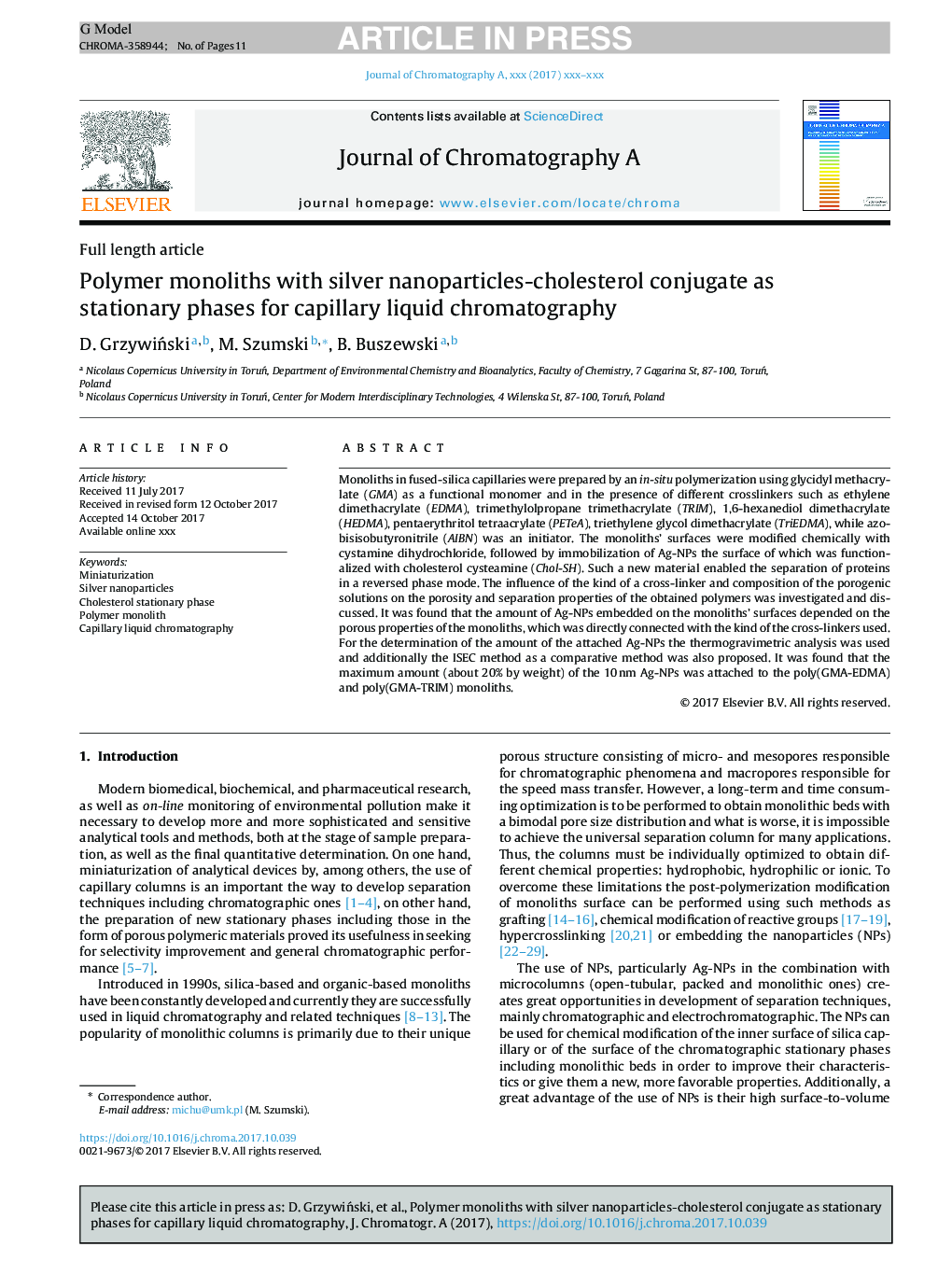| Article ID | Journal | Published Year | Pages | File Type |
|---|---|---|---|---|
| 7609524 | Journal of Chromatography A | 2017 | 11 Pages |
Abstract
Monoliths in fused-silica capillaries were prepared by an in-situ polymerization using glycidyl methacrylate (GMA) as a functional monomer and in the presence of different crosslinkers such as ethylene dimethacrylate (EDMA), trimethylolpropane trimethacrylate (TRIM), 1,6-hexanediol dimethacrylate (HEDMA), pentaerythritol tetraacrylate (PETeA), triethylene glycol dimethacrylate (TriEDMA), while azobisisobutyronitrile (AIBN) was an initiator. The monoliths' surfaces were modified chemically with cystamine dihydrochloride, followed by immobilization of Ag-NPs the surface of which was functionalized with cholesterol cysteamine (Chol-SH). Such a new material enabled the separation of proteins in a reversed phase mode. The influence of the kind of a cross-linker and composition of the porogenic solutions on the porosity and separation properties of the obtained polymers was investigated and discussed. It was found that the amount of Ag-NPs embedded on the monoliths' surfaces depended on the porous properties of the monoliths, which was directly connected with the kind of the cross-linkers used. For the determination of the amount of the attached Ag-NPs the thermogravimetric analysis was used and additionally the ISEC method as a comparative method was also proposed. It was found that the maximum amount (about 20% by weight) of the 10Â nm Ag-NPs was attached to the poly(GMA-EDMA) and poly(GMA-TRIM) monoliths.
Keywords
Related Topics
Physical Sciences and Engineering
Chemistry
Analytical Chemistry
Authors
D. GrzywiÅski, M. Szumski, B. Buszewski,
